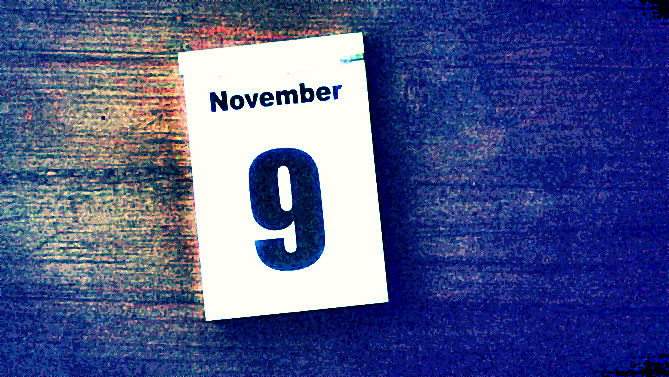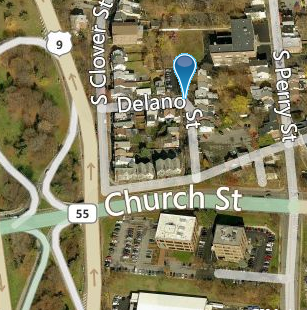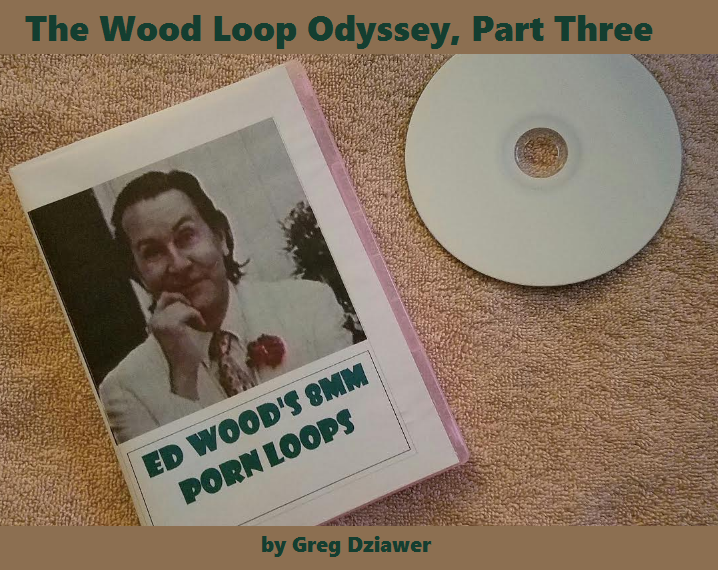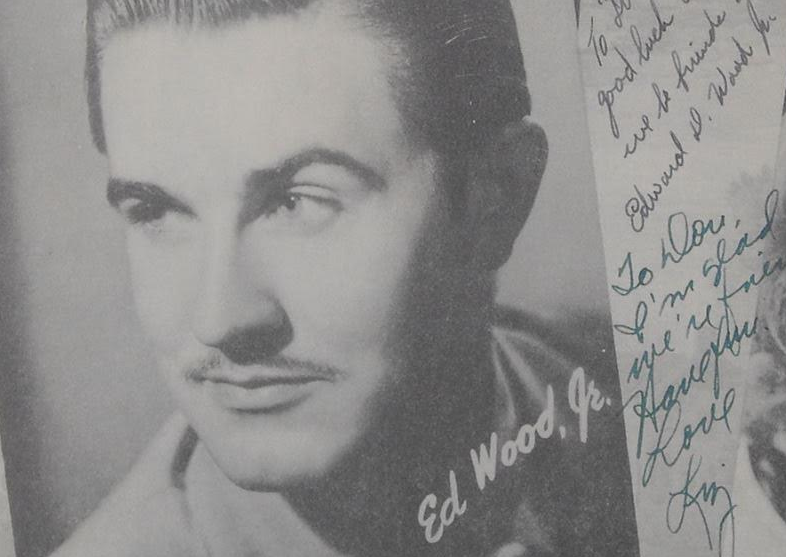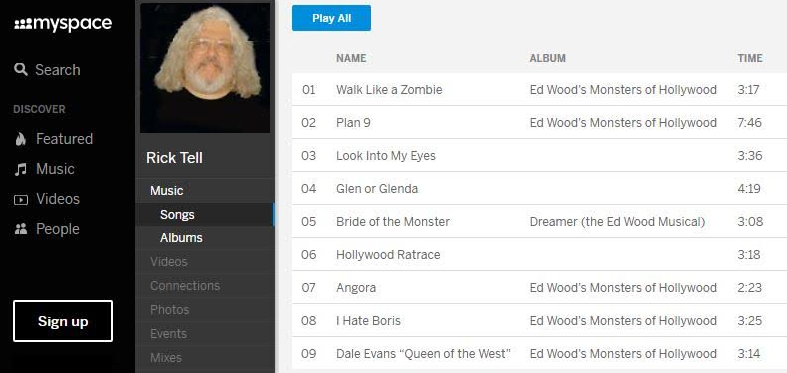 |
| Martin Landau begs to differ with Bobby Slayton in this moment from Ed Wood. |
INTRODUCTION: Before I head out for the Christmas holiday, I thought I'd share a previously unpublished Ed Wood article I had sitting in my "Drafts" folder. I was inspired by Greg Dziawer's article, "The Wood Halloween Odyssey," to share my own thoughts about Bela Lugosi's June 1954 appearance on The Red Skelton Show alongside fellow horror icons Vampira and Lon Chaney, Jr. The episode in question is a fascinating cultural artifact in a number of ways, and I wanted to write about it. Please enjoy and have a safe and happy holiday. J.B.
 |
| The published screenplay. |
When Larry Karaszewski and Scott Alexander were writing the screenplay for the 1994 biopic
Ed Wood, they rifled through Rudolph Grey's 1992 patchwork biography
Nightmare of Ecstasy: The Life and Art of Edward D. Wood, Jr. looking for weird details and crazy anecdotes they could use. One passage chosen by the duo appears on page 103 of Grey's book in a chapter called "The Wood Spooks." Here, through new and archival quotes, Maila "Vampira" Nurmi, actor John Andrews, and Ed Wood himself give their thoughts on the time Bela Lugosi guest starred on CBS' long-running comedy series
The Red Skelton Show in 1954, allegedly with Ed Wood in tow as his personal dialogue coach.
At that point in history, Skelton had only been with the so-called "Tiffany Network" a single season. A popular radio comedian turned TV star, he'd done two years on NBC before changing networks in 1953, and his show was not yet the ratings powerhouse it would soon be for CBS until its controversial cancellation in 1970. (For its last season,
The Red Skelton Show briefly moved back to NBC, finally expiring for good in 1971.) The episode with Lugosi, "Dial 'B' For Brush," occurred as Skelton was in the process of rebuilding his TV brand. Skelton's show was not a Top 30 hit in 1954. In the broadcast, likening himself to a little boat caught in a storm, Skelton elaborately thanks CBS and his chief sponsor, Geritol, for their faith in him.
For Nurmi, this
Red Skelton gig occurred during the year-long period when she hosted a celebrated horror show as her Vampira character on Los Angeles television. She showed some of Lugosi's movies on that iconic, now mostly-lost series. But
Red Skelton was the first time she actually worked with the legendary Lugosi in the flesh. She'd long since forgotten the script by the time she talked to Rudolph Grey decades later, but she recalled being in "the kind of mausoleum they have where the caskets roll in and out of the wall." She described Lugosi as being an "elegant" and "genteel" man who mostly "stayed in his dressing room alone." The actor clearly made a strong impression on the nascent horror hostess. "He made me feel like a noblewoman," Nurmi enthused. "And here I was, this Hollywood tramp."
It was the contention of actor John Andrews (the werewolf from
Orgy of the Dead) that Ed Wood assisted Bela Lugosi on
The Red Skelton Show at Lugosi's insistence. "Eddie, they don't know how to write for me. You write. You write," Lugosi is claimed to have said at the time. But Ed himself didn't claim to have written the show.
Ed Wood merely says the following: "I was Lugosi's dialogue consultant. There were certain words which had to be changed because he couldn't form them properly." That's it. A rather modest boast, if it can even be called such.
In the book
Bride of the Monster: Scripts from the Crypt by Gary Rhodes and Tom Weaver, this is cited as yet another example of delusional, grandstanding Eddie trying to insert himself into the Lugosi legend where he didn't belong. The skeptical authors won't even acknowledge that Eddie was involved with the show at all. It's important to note that Rhodes and Weaver merely offer their
interpretation of the events. But if Wood were trying to make up a tall tale to enhance his own career, couldn't he have done better than saying he was a dialogue consultant on a show that wasn't even that big a hit at the time? One senses that Rhodes and Weaver are overcompensating for the hagiography and hero worship of
Ed Wood by consistently portraying Ed as a self-promoting, opportunistic hack.
 |
| Comedian Bobby Slayton |
Anyway, the story of Ed assisting Bela on
The Red Skelton Show—even if apocryphal— must have been convincing enough for Karaszewski and Alexander, because a version of the anecdote makes it into
Ed Wood. About a third of the way into Tim Burton's film, Eddie (Johnny Depp) is cold calling potential producers and investors for
Bride of the Monster (at that point still called
Bride of the Atom), when one respondent asks whether Bela is "available Friday night." Cut to a busy TV studio, where a nervous Bela (Martin Landau) is going over his script with Eddie. The idea that Ed somehow "got" Bela the TV gig is purely an invention of the screenplay. None of the participants, including Eddie, ever made that claim.
Possibly for legal reasons, no direct mention of Red Skelton or
The Red Skelton Show is made in
Ed Wood. The program Bela is working on is simply "a 1950s variety show" and its brash, gravel-voiced star (Bobby Slayton) is merely identified in the script as "the show host, a cheesy comedian." In reality,
Red Skelton was a straight-ahead comedy series consisting of a monologue and some sketches. But here, it's a full-fledged variety showcase, closer to what Ed Sullivan was doing on
Toast of the Town on Sunday nights. There are showgirls backstage, and Criswell (Jeffrey Jones) appears on the show to give his incredible, inaccurate predictions about how man will have colonized Mars by 1970.
It is unlikely that Alexander and Karaszewski had seen any footage from the real
Red Skelton broadcast from 1954, so -- as with their parallel universe version of Ed's play
The Casual Company -- they simply imagined what the vintage broadcast would have been like. In some respects, they weren't too far off the mark, and in others, they were wildly wrong. In their script, the cranky, impatient host appears as "his 'Slick' character, a befuddled moron in a funny hat" in a silly, vaudeville-style sketch opposite Bela Lugosi as "the Count." A sexy female announcer describes the premise to the audience: "And now we take you to a castle in Transylvania. Watch out. The landlord's a real pain in the neck."
In full, the host's character is referred to as "Slick Slomopavitz, seeker of adventure," and he seems to have wandered into Dracula's castle in search of shelter, rousing the centuries-old vampire from his coffin in the process. The idea is for Slick and Lugosi to trade scripted quips, reading from cue cards, but the comedian decides to improvise gags during a live broadcast, and the elderly Lugosi is confused and disoriented. The sketch is cut short, and the furious host storms off, complaining that "we should've got Karloff." Lugosi has thus been humiliated on national television, and it's now Eddie's job to pick him back up again.
It's true that live TV shows in the 1950s were prone to gaffes and unexpected happenings. Sets could topple over. Actors could flub their lines. Complete strangers could wander onto the set. The Lugosi character in
Ed Wood is not wrong when he says that "this live television is madness." But it's very unlikely that a professional comedian with his own network show would start improvising brand new lines during an already-in-progress scene with a non-comic who is working from cue cards. It's Slick, not Bela, who would be called on the carpet for this. The
surviving footage of the genuine broadcast reveals that nothing remotely like this happened on
The Red Skelton Show in 1954. The show went according to schedule, and Lugosi was active and engaged throughout. He really throws himself into the comedy, even singing and dancing a little when necessary.
 |
| Red Skelton in character. |
And that brings us to the television program itself.
The Red Skelton Show is such a product of its time that it may not translate all that gracefully into ours.
The same isn't necessarily true of Skelton's comedic contemporaries of the 1950s. Through numerous series and specials, Sid Caesar set a sketch comedy template that
Saturday Night Live would later follow, while giving the next generation of humorists, including Mel Brooks, Larry Gelbart, Neil Simon, and Woody Allen, their start in showbiz. Jackie Gleason's
The Honeymooners is still being aped by sitcoms today, while Lucille Ball's
I Love Lucy has never left the air in over half a century. Their work isn't as ubiquitous these days, but Jack Benny and Phil Silvers created onscreen personas that still resonate in scattered reruns and YouTube clips. Today's comics may not be directly influenced by Benny and Silvers, but it's still possible to detect elements of their personalities in their work. Ernie Kovacs, too, is still cited as a pioneer, maybe the first comedian who truly understood what made TV different from other media.
But Richard "Red" Skelton is something else: a holdover from a vanished, now almost forgotten era in American entertainment. Television itself was a relatively young medium in Red's day, and its vaudeville roots were in plain sight back then. A veteran of vaudeville (as well as the medicine show and burlesque circuits), Skelton specialized in comedy that was broadly silly, brazenly obvious, and often shamelessly sentimental, verging on bathetic. Slapstick and pantomime were key to his appeal, as was his folksy, friendly manner. Viewers could sense his warmth and sincerity coming through the cathode ray tubes, and they tuned in every week for more.
In a way, it's extremely bizarre casting that aggressive, motormouthed Bobby Slayton, the so-called "Pitbull of Comedy," should essentially stand in for Red Skelton in
Ed Wood. These two performers' styles were vastly different. Skelton's classic character, Clem Kadiddlehopper, does have a few things in common with Slick Slomopavitz, including a low IQ and a goofy, ill-fitting costume.
Modern viewers might dismiss
The Red Skelton Show as corny and old-fashioned, and they wouldn't be wrong. The host preferred the more gentle label "clown" to "comedian," and he even made a second career out of his cloying clown paintings. Other than being a relatively early adopter to the television medium, Skelton was not really an innovator. He was more of a traditionalist. That extended to his ultra-conservative political views as well. When he was abruptly ousted from CBS in 1970, after years of Top 10 ratings, Skelton blamed the encroachment of the hippie counterculture. Today, the routine for which Skelton is arguably best known,
a word-by-word annotation of the Pledge of Allegiance, has virtually no comedy in it. It is simply a statement of unswerving patriotism.
It was Skelton himself who largely kept his own reruns off the air in the 1970s and beyond. He was embittered over the cancellation of
The Red Skelton Show and never got over it. So the series did not become a staple of syndication the way
I Love Lucy and
The Honeymooners did. As a result, several generations grew up without Red as a cultural touchstone. Skelton died in 1997, and there have been various repackages of his vintage shows since then, marketed mostly to people who remember watching the comedian decades ago.
 |
| (left) Red Buttons; (right) Red Skelton |


